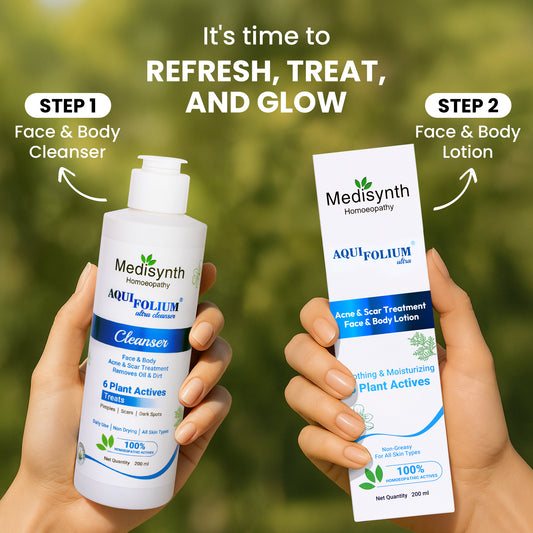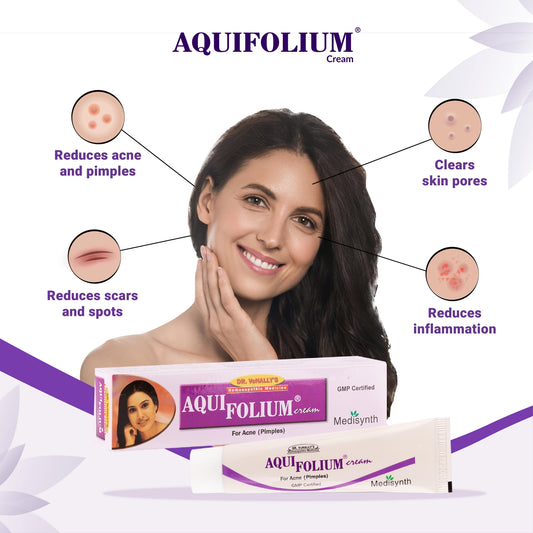Top Homeopathic Remedies for Wounds

homeopathy stands out for its gentle yet effective approach to healing various ailments, including wounds and scars. Rooted in the principle of "like cures like," homeopathy utilises dilutions in different potencies & mother tinctures to stimulate the body's innate healing mechanisms. When it comes to wounds and scar prevention, homeopathic remedies offer a holistic alternative to traditional treatments, aiming not only to address the physical symptoms but also to promote overall well-being.
Unlike conventional medicine, which often focuses solely on symptom management, homeopathy considers the individual as a whole, taking into account their unique physical, emotional, and mental aspects. By addressing the underlying imbalances that contribute to wound healing and scar formation, homeopathic remedies aim to facilitate the body's natural ability to heal and regenerate tissues.Whether you're dealing with minor cuts and scrapes or recovering from surgery, integrating homeopathy into your healing regimen can offer gentle yet potent support for a speedy recovery and smooth skin regeneration.
Understanding Wounds: Causes and Types
Wounds and scars are an inevitable part of the human experience, often serving as visible reminders of our body's remarkable ability to heal and regenerate. Whether resulting from accidents, surgeries, or medical conditions, understanding the causes and types of wounds and scars is crucial for effective treatment and management.
In this article, we will explore the various factors that contribute to wound formation, delve into the different types of scars, and discuss strategies for promoting optimal healing and minimising scarring.
Wounds can arise from a multitude of sources, ranging from minor cuts and scrapes to more severe injuries.
Some common causes include:
-
Trauma: Accidents, falls, cuts, and puncture wounds can result in tissue damage and open wounds.
-
Surgical Procedures: Incisions made during surgical interventions create wounds that require healing.
-
Burns: Exposure to heat, chemicals, electricity, or radiation can cause burns, leading to skin damage and potential scarring.
-
Medical Conditions: Certain medical conditions, such as diabetic ulcers, bedsores, and inflammatory skin disorders, can predispose individuals to chronic wounds.
-
Infections: Bacterial, viral, or fungal infections can compromise skin integrity and delay wound healing.
Types of Wounds:
Wounds are classified based on their cause, severity, depth, and the type of tissue affected. Here are the main types:
1. Open Wounds:
These are wounds in which the skin is broken, exposing underlying tissues.
-
Abrasion: A superficial wound caused by scraping or rubbing of the skin against a rough surface (e.g., road rash). Usually, only the outer layer of skin (epidermis) is damaged.
-
Laceration: A tear or jagged cut in the skin, often caused by blunt force or trauma (e.g., falling on glass). Lacerations may involve deeper tissues and muscles.
-
Incision: A clean, smooth cut, typically caused by a sharp object like a knife or surgical instrument. It is usually neat and may heal well if properly treated.
-
Puncture Wound: A deep, narrow wound caused by an object piercing the skin (e.g., stepping on a nail, a stab wound). These can be dangerous as they may involve deeper tissues and carry a risk of infection.
-
Avulsion: A severe wound where tissue is forcibly torn or ripped away from the body, often due to a significant injury (e.g., deep cuts or accidents involving machinery).
-
Bites: Wounds caused by animal or insect bites, which can carry a risk of infection. Animal bites, especially from dogs or cats, may result in puncture wounds.
2. Closed Wounds:
These involve internal injury without the skin being broken.
-
Contusion (Bruise): A blunt injury that damages blood vessels, leading to bleeding under the skin. It causes discoloration and swelling but does not break the skin.
-
Hematoma: A collection of blood outside of blood vessels, often resulting from a trauma or impact that causes blood vessels to rupture.
-
Crush Injury: Occurs when a part of the body is subjected to a significant amount of force or pressure, potentially damaging internal tissues and bones.
3. Burns:
Burns are classified based on the depth of skin damage.
-
First-Degree Burn: A superficial burn affecting only the outer layer of the skin (epidermis). Symptoms include redness, pain, and minor swelling (e.g., sunburn).
-
Second-Degree Burn: Affects both the outer and underlying layers of the skin (epidermis and dermis). It causes blisters, pain, and swelling.
-
Third-Degree Burn: A full-thickness burn that extends through all layers of the skin and into deeper tissues. The skin may appear white or charred, and there may be little to no pain due to nerve damage.
-
Fourth-Degree Burn: Extends beyond the skin to damage muscles, tendons, and bones. These are severe burns and can lead to permanent damage or loss of function.
4. Chronic Wounds:
These are wounds that do not heal properly and persist over time, often due to underlying medical conditions.
-
Venous Ulcers: Typically occur on the lower legs and feet, often associated with poor circulation due to conditions like varicose veins.
-
Diabetic Ulcers: Common in people with diabetes, these occur due to poor circulation and nerve damage, often on the feet.
-
Pressure Ulcers (Bedsores): Caused by prolonged pressure on the skin, typically in individuals who are immobile for long periods (e.g., bedridden patients).
-
Arterial Ulcers: Caused by poor blood circulation, often seen in people with arterial diseases.
Scars form as a natural part of the wound healing process, but certain factors can influence their appearance and severity. Some common causes include:
-
Type and Severity of Injury: The type, size, and depth of the wound play a significant role in scar formation. Deeper wounds and those involving multiple tissue layers are more likely to result in noticeable scars.
-
Genetics: Individual genetic factors can influence how the body responds to injury and heals wounds, affecting the formation and appearance of scars.
-
Age: Younger individuals tend to heal more rapidly and produce less noticeable scars compared to older individuals, whose skin may have reduced elasticity and regenerative capacity.
-
Skin Color and Type: People with darker skin tones are more prone to developing hyperpigmented or keloid scars, while those with lighter skin tones may be at higher risk of developing atrophic scars.
-
Infection and Inflammation: Infections and excessive inflammation during the healing process can impair collagen synthesis and lead to abnormal scar formation.
Scars can vary widely in appearance and texture, depending on factors such as the type of injury, individual healing characteristics, and treatment interventions.
Common types of scars include:
-
Hypertrophic Scars: Raised, red scars that remain confined to the boundaries of the original wound, often resulting from overproduction of collagen during healing.
-
Keloid Scars: Thick, raised scars that extend beyond the boundaries of the original wound, characterised by excessive collagen formation and inflammation.
-
Atrophic Scars: Depressed or sunken scars resulting from the loss of underlying tissue during healing, commonly seen in conditions such as acne or chickenpox.
-
Contracture Scars: Tight, restrictive scars that form over burned or injured skin, leading to tightening and distortion of the surrounding tissue.
-
Acne Scars: Scars resulting from severe acne lesions, including ice pick scars, boxcar scars, and rolling scars, which can vary in appearance and texture.
Lifestyle and Dietary Tips for Wound Healing
Lifestyle and dietary factors play a crucial role in supporting the body's natural healing processes. Here are some lifestyle and dietary tips to promote wound healing:
-
Consume a balanced diet rich in essential nutrients, including vitamins A, C & E and zinc, which are essential for wound healing.
-
Drink adequate amount of water throughout the day to stay hydrated. Proper hydration is essential for maintaining optimal blood flow and delivering nutrients to the wound site.
-
If you smoke, quitting is one of the most important steps you can take to improve wound healing. Smoking restricts blood flow and reduces oxygen delivery to tissues, which can impair healing and increase the risk of complications.
-
If you have underlying health conditions such as diabetes, high blood pressure, or autoimmune disorders, work with your healthcare provider to manage them effectively. Chronic conditions can affect wound healing and may require specialised care.
-
Engage in regular physical activity to improve circulation and promote overall health. Low-impact exercises such as walking, swimming, or yoga can help enhance blood flow to the wound site and support healing.
-
Keep the wound clean and dry to prevent infection. Wash your hands thoroughly before and after handling the wound, and use gentle cleansing agents recommended by your healthcare provider.
-
Prioritise sleep and aim for 7-9 hours of quality sleep per night. Adequate rest is essential for tissue repair, hormone regulation, and immune function, all of which contribute to optimal wound healing.
-
Limit your alcohol intake, as excessive alcohol consumption can impair immune function and interfere with the body's ability to heal wounds.
Homeopathic Treatment for Wounds: Principles and Effectiveness
homeopathic remedies, derived from natural substances, work by stimulating the body's innate healing mechanisms to promote faster recovery and reduce scarring. Here are some common homeopathic remedies used for wounds:
-
Calendula Officinalis (Calendula): Calendula is one of the most widely used homeopathic remedies for wounds and cuts. It helps promote rapid healing, reduces inflammation, and prevents infection. The special kind of wounds indicating its use are lacerated wounds, superficial burns & scalds.
-
Zincum Oxydatum: Commonly known as Zinc Oxide, Zinc oxide used to treat minor skin irritations such as burns, cuts & scratch. Its therapeutic properties make it a popular choice in both conventional and alternative medicine.
-
Acidum Boracicum: Acidum Boracicum, also known as Boric Acid, is a versatile compound that has been used for various medicinal purposes, including wound care and exfoliating dermatitis. Its antiseptic and disinfectant properties make it an effective option for treating wounds and minimising putrefaction.
Top Homeopathic Remedies for Wounds
Calendol Special Cream
Medisynth’s Calendol Special Cream is the best homeopathic remedy that you can find for the wounds and scar prevention because of the fact that they are a well-known brand when it comes to homeopathic remedies and they have all the ingredients mentioned above that are known to provide relief from wounds and scars.
Calendol Special Cream is a specially formulated antiseptic healing cream. It helps treat wounds, cuts, inflammations and burns and is also used in post-operative dressings.
It minimises scars and is useful in bedsores.The main ingredients of Calendol Special Cream are Calendula Officinalis, Zincum Oxydatum and Acidum Boracicum which are the key homeopathic ingredients known for wound prevention abilities.
Conclusion
By adopting healthy habits and making conscious choices, we can support the body's natural healing processes and improve outcomes for wounds of all types.
A nutrient-rich diet, adequate hydration, regular exercise, and stress management are essential components of a holistic approach to wound care.
Also, Calendol Special Cream has been known to provide lasting benefits for wound and scar prevention but it is important to consult an expert on the frequency of its dosage and application.
References:
Boericke’s Materia Medica









